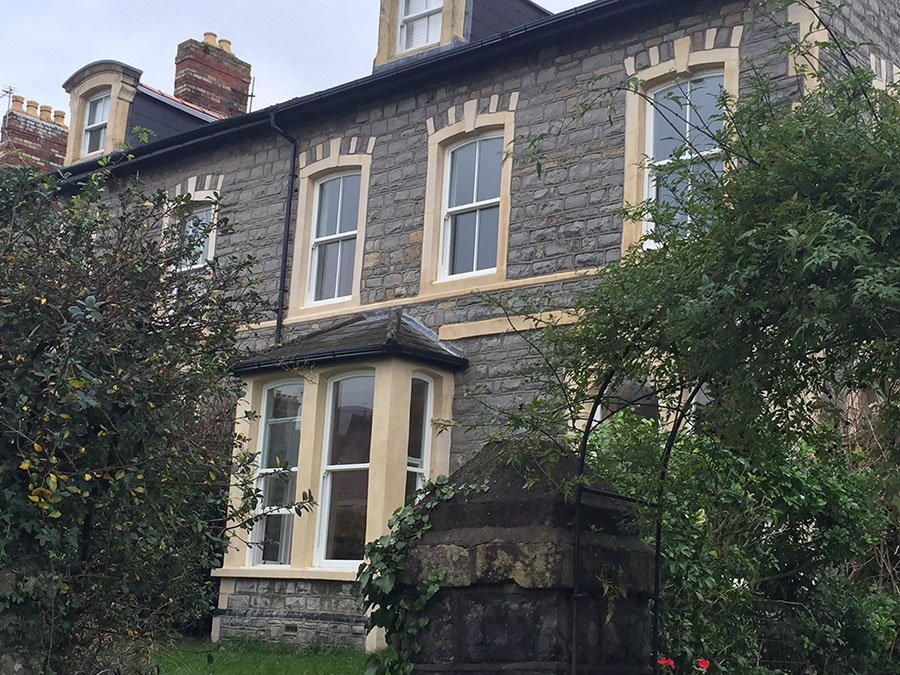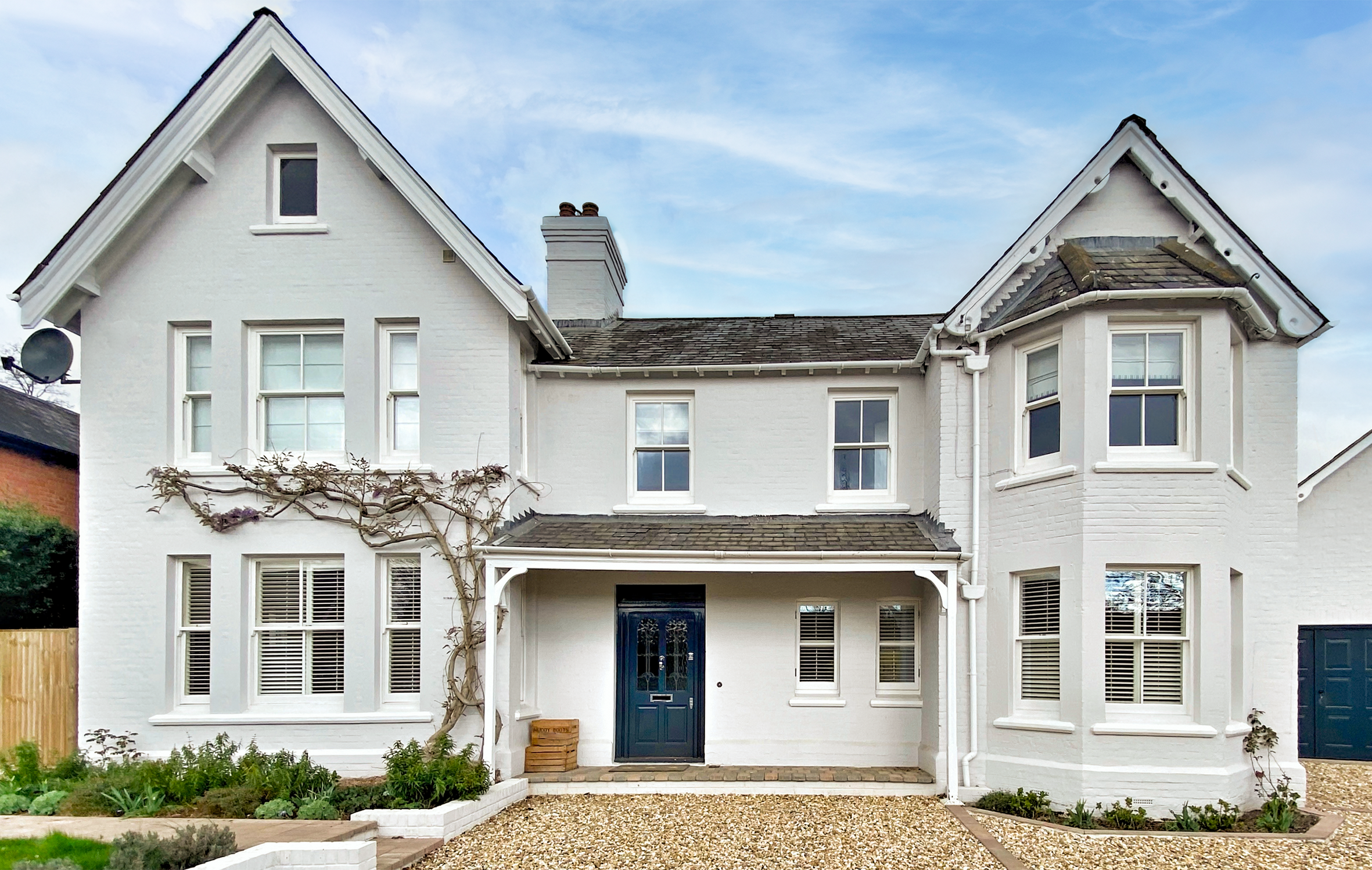Demystifying conservation [Glass News]
Roseview director Mike Bygrave wrote a guest article for Glass News magazine’s Ask The Expert feature, on the subject of windows in conservation settings.
Roseview has been manufacturing uPVC sash windows since 1985, giving us almost 40 years of experience in heritage windows. Throughout that time it’s been clear that homeowners and installers are often daunted by conservation areas. The subject is shrouded in uncertainty, misconception and false assumptions.
This is understandable as conservation lacks a single defining authority. Instead there’s various legislation that devolves much of the decision-making to local authorities, often leading to varying interpretations.
However, misunderstanding conservation restricts homeowners and installers by needlessly limiting their options. In reality, the subject is not as daunting as it first seems; it can be simplified into five categories.
PLANNING PERMISSION
By default, building works require planning permission. However, to streamline the process many minor works are included in the framework of “permitted developments”, where explicit planning permission is not required. Fortunately this includes like-for-like replacement of windows and doors—installers benefit from this every day.
PERMITTED DEVELOPMENT
In most situations Permitted Development (Class A) allows for windows and doors to be replaced without planning permission, as long as the replacements have a “similar visual appearance” to the existing. This term is key, as it doesn’t specify materials.
There are some restrictions to Permitted Development. It only applies to single dwellings, not sub-divided buildings (like flats), buildings with a commercial element or properties that have had a change of use (e.g. barn conversions). Also previously granted planning permission may remove subsequent Permitted Development.
Crucially, a conservation area does NOT automatically remove windows from Permitted Development.
CONSERVATION AREAS
The two most common misconceptions we come across are that changing windows in a conservation area requires approval, and that replacements must match original materials. Neither of these are automatically true.
In terms of planning, conservation areas on their own have little meaning. A home in a conservation area is subject to the same rules as anywhere else, unless Permitted Development has been specifically removed or altered (typically by an Article 4 Direction).
It is also important to note that “similar visual appearance” does not include materials. In fact the technical guidance on Permitted Development (section A.2) uses replacement uPVC windows as an example of permitted change.
However, in conservation areas “similar visual appearance” will probably come under more scrutiny than usual. Also, if original windows have already been changed (e.g. from sash to casement), then changing them back counts as altering the visual appearance. That said, in conservation areas it’s a change that most authorities are likely to support.
ARTICLE 4 DIRECTIONS
These are used by local authorities to revoke or alter what falls under Permitted Development, pushing those works back into the planning process.
The use of Article 4s varies widely between different authorities; some don’t use them at all, others apply them across all their conservation areas. They can affect whole or parts of conservation areas, or individual buildings. They can also remove certain features from Permitted Development, such as the front elevation of buildings but not the sides or backs. Therefore it is important to check the wording of the Article 4 Direction carefully.
LISTED BUILDING CONSENT
Listed buildings fall outside of the standard planning framework. Any alterations that affect their character, appearance or special interest status require specific Listed Building Consent, which considers both appearance and materials.
Listed Building Consent is granted by local authority planning departments, following consultation with Historic England (or equivalent). Making changes without consent is a criminal offence for both the owner and the contractor.
SO CAN I USE uPVC?
The short answer is, “yes, unless a planning application forbids it”.
Whether a planning application is required or not depends on two key questions: are you making visually similar changes that normally fall within Permitted Development, and—if so—have those rights been removed by listed status or an Article 4 Direction?
The key factor in most cases is appearance, not materials. Only listed buildings and some Article 4 Directions insist on using original materials like timber and steel.
Finally, if you’re in any doubt, seek advice. Speaking to the conservation officer or planning department will often clarify things. If there’s an Article 4 Direction in place, check the wording carefully. Usually these two acts will confirm what’s covered by Permitted Development and what requires a planning application. Finally, for more detailed information refer to the relevant legislation—the key ones are the Town and Country Planning Act (1990), Planning (Listed Buildings & Conservation Areas) Act (1990) and Town and Country Planning (General Permitted Development) Order (2015)—or consult a specialist conservation planning service.
Roseview’s Ultimate Rose sash window has been carefully designed to make it ideal for conservation settings. Visit our Ultimate Rose page for more information.
Tags: conservation, heritage





![True heritage is more than a sum of its parts [Glass Times]](https://www.roseview.co.uk/wp-content/uploads/2021/04/UR-WISTERIA-EDITED-4.jpg)
![Heritage depends on authenticity [Windows Active]](https://www.roseview.co.uk/wp-content/uploads/2022/10/UR-Cream-Centurion-July19-4.jpg)